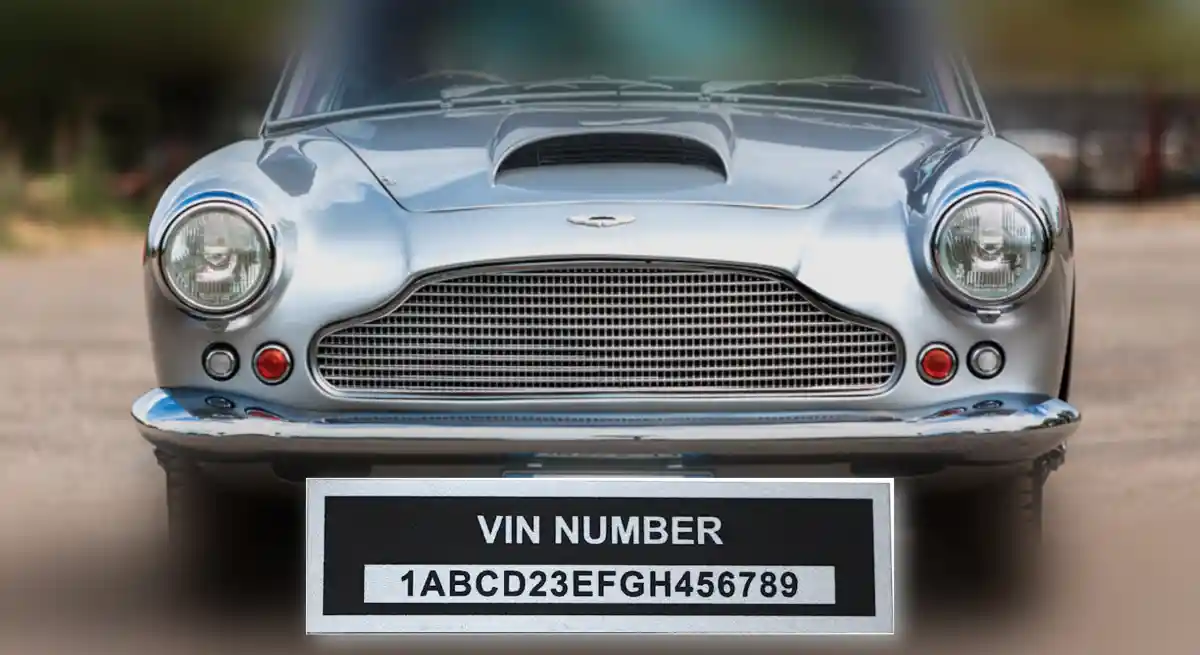It seems you just lost your car’s VIN (Vehicle Identification Number) plate. Or, it was perhaps defaced. Sure, you can get a replacement VIN plate. In fact, the only time you can receive a duplicate is when your original VIN plate has been lost, defaced, or destroyed. The new VIN decal you receive carries the same VIN originally on the car.
Of course, you need to follow a process, which this post outlines to guide you through the process. The steps may be different depending on your state. Nevertheless, the steps in this guide are generally the case in most states.
Can You Replace a VIN Number on a Car?
Yes, you can legally obtain a replacement VIN (Vehicle Identification Number) plate if it is lost, stolen, or damaged. However, replacing a VIN plate is a regulated process since the VIN is a unique identifier for your vehicle. The issuing agency will be careful to detect a possible VIN cloning attempt.
The specific process can vary depending on your location, but generally, to get a replacement VIN plate involves contacting your local Department of Motor Vehicles (DMV) or the equivalent organization in your country. You’ll need to provide them with supporting documents such as vehicle registration, proof of ownership, and possibly a police report if the VIN plate was stolen. The DMV may also require a vehicle inspection by an authorized officer to rule out any potential fraudulent activities.
In some instances, you might also need to reach out to the vehicle manufacturer for a replacement. The process might involve fees and can take some time due to the associated legalities and verification processes. Always remember that VIN plate replacement should be done under the purview of the law to avoid any legal complications.
How to Get a Replacement VIN Plate

It could help to put a phone call through to your local DMV (Department of Motor Vehicles) for guidance. But before then, here are the steps to expect concerning how to get a replacement VIN plate for a car:
1. Prepare all necessary vehicle information
You want to have all the relevant details regarding your vehicle. Information such as the make, model, and year of manufacture is critical and can usually be found in your vehicle’s owner manual or on the registration documents. These basic details help identify the exact specification of your vehicle, otherwise, you won’t get a replacement VIN plate.
The most crucial piece of information, however, is the original Vehicle Identification Number (VIN). This 17-character alphanumeric is unique to a single vehicle – no two vehicles in operation should have the same VIN. If your VIN plate is damaged but still somewhat legible, try your best to note down the number. If it’s not readable or missing, don’t worry.
The VIN is usually located in multiple places, such as on the vehicle’s frame, on the driver’s side door post, or in the engine compartment. You can also find it on insurance cards, title records, and other official documents.
2. Document your reason
You’d also have to document the current condition of your VIN plate. If it’s damaged, take clear, well-lit photographs of the plate showing the extent of the damage.
If the VIN plate is completely missing, photograph the area where the VIN plate was originally mounted. These photos will serve as proof of the plate’s condition and will be required when filing for a replacement.
In case your VIN plate was stolen, the best step is always to file a police report immediately. Make sure to keep a copy of the report as you’ll need it later in the process. Filing a police report also helps protect you legally in case the stolen VIN is used for illegal activities.
3. Contact your local authorities
Reach out to your local DMV or its equivalent in your state and explain the situation to them. You need to provide them with your vehicle’s details and documented proof of the damaged or missing VIN plate.
Note that each jurisdiction might have its specific procedures for VIN replacement, so be sure to follow their advice.
In some cases, you might need to fill out specific forms and pay a fee for VIN replacement. This process might also involve an inspection of your vehicle by an authorized officer. This inspection makes sure that your car hasn’t been involved in any illicit activities like theft or fraud. Once cleared, the DMV can move forward with the process of issuing you a new VIN plate.
4. Install your replacement VIN plate
After approval from the DMV, you’ll receive your new VIN plate. It’s important to ensure that the replacement is installed correctly, as a poorly mounted VIN plate can lead to more problems down the line.
Depending on the design of your vehicle, you might need professional assistance to do this. Reach out to a certified mechanic or a vehicle body shop for this task. They have the right tools and expertise to install the VIN plate properly, ensuring it stays secure.
What is the Difference Between VIN Plate and VIN Sticker?
A Vehicle Identification Number (VIN) is a unique identifier that is assigned to each vehicle. This VIN is often presented in two different formats on a vehicle – a VIN plate and a VIN sticker. Although they display the same information, the two differ primarily in their physical form and location on the vehicle.
Physical Form and Durability
| Physical Form | Durability |
|---|---|
| VIN Plate | Small, metal plate |
| Highly durable and resistant to damage | |
| from environmental factors | |
| VIN Sticker | Adhesive paper or plastic |
| More susceptible to wear, tear, | |
| or environmental damage over time | |
| Potential fading or peeling |
Location and Purpose
| Location | Purpose |
|---|---|
| VIN Plate | Usually located in areas like |
| the driver’s side dashboard or the engine bay | |
| Used as the primary source of the VIN | |
| Used for official purposes | |
| (e.g., law enforcement, vehicle inspections) | |
| VIN Sticker | Found in various places on the vehicle |
| (e.g., door jamb, glove compartment, | |
| under the hood) | |
| Placed in multiple, easily accessible | |
| locations for convenience | |
| May contain additional information | |
| beyond the VIN | |
| (e.g., manufacturing data, | |
| gross vehicle weight, compliance certification) | |
| Provides easy access to vehicle information | |
| for owners, mechanics, and other personnel |
All said, both the VIN plate and the VIN sticker serve the same primary function – to display the unique VIN of the vehicle. However, they differ in their material composition, durability, and the range of information they contain. Both are vital components of vehicle identification and should be maintained in a readable condition to facilitate smooth vehicle operations and transactions.
Conclusion
When you need to get a replacement VIN plate, the issuing agency can be strict and thorough. That’s because they do not want dishonest people tricking the system to legalize a stolen vehicle. Just follow the steps above and provide every required document proving that the car is legitimately registered to your name.
Read also: How to Find a License Plate Number from a VIN Number
![How Much Does a Tune-Up Cost [2024 Prices & Guide] How Much Does a Tune-Up Cost [2024 Prices & Guide]](https://sanedriver.org/wp-content/uploads/2023/01/PicsArt_01-06-07.16.29.jpg)

